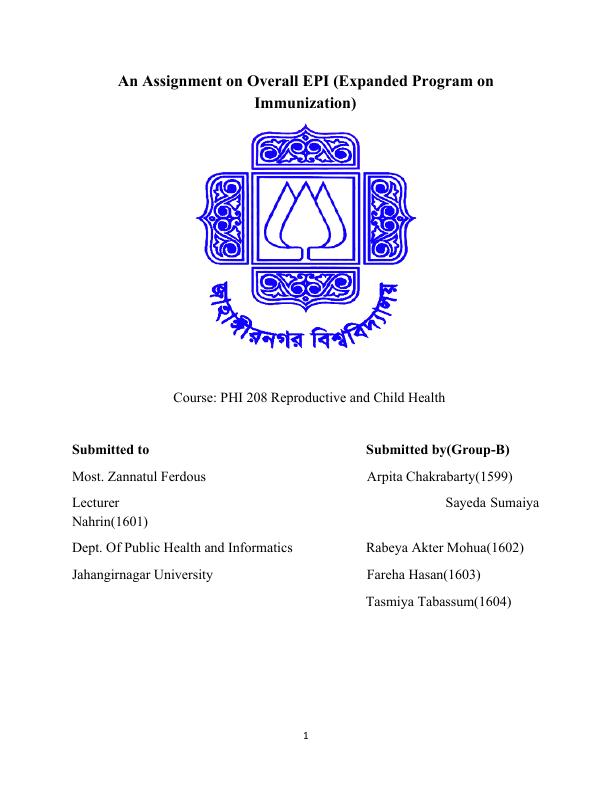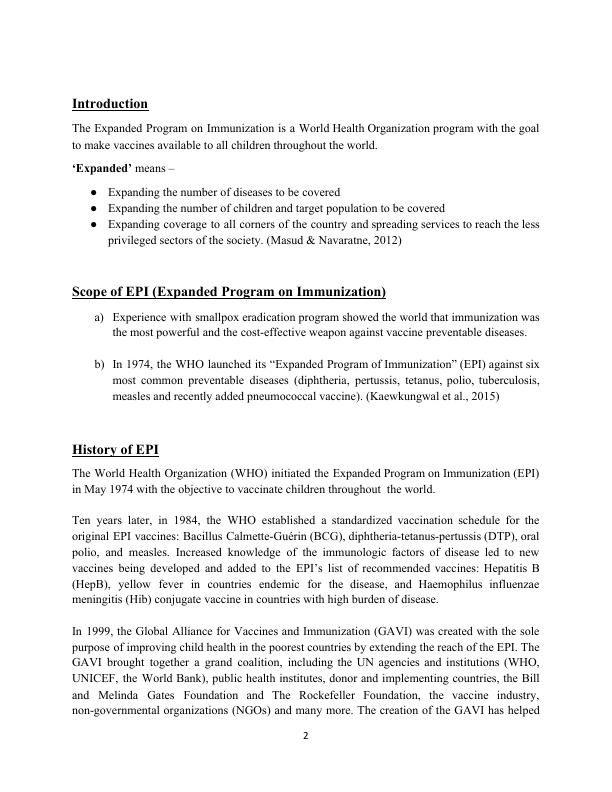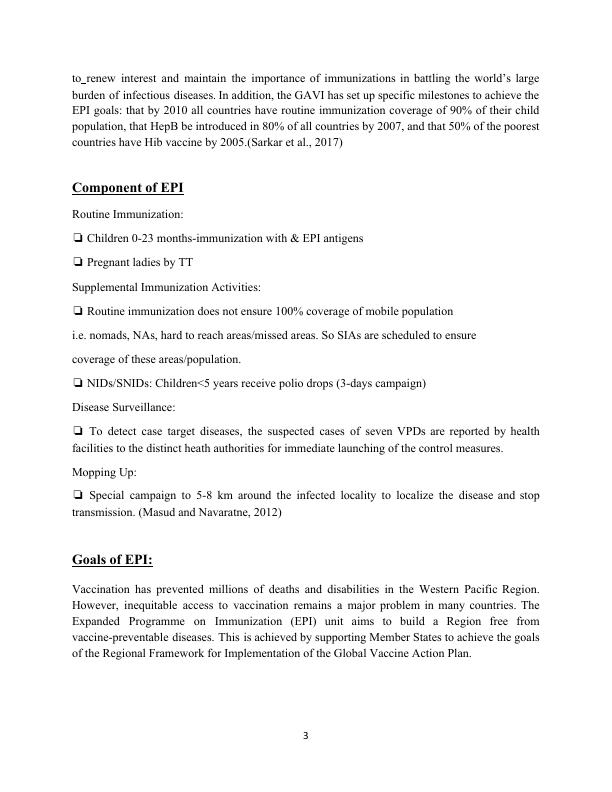( PHI 208)-Reproductive and Child Health
14 Pages4440 Words79 Views
Jahangirnagar University
Added on 2023-05-12
About This Document
In this assignment we will discuss about EPI and below are the summaries point:-
-
The Expanded Program on Immunization (EPI) was initiated by the World Health Organization to provide vaccines to children worldwide.
-
EPI aims to expand the number of diseases covered, children and target population covered, and reach underprivileged sectors of society.
-
EPI includes routine and supplemental immunization activities and disease surveillance to detect targeted diseases.
( PHI 208)-Reproductive and Child Health
Jahangirnagar University
Added on 2023-05-12
ShareRelated Documents
End of preview
Want to access all the pages? Upload your documents or become a member.
Immunization against Whooping Cough and Measles in Australian Children
|6
|1527
|95
Vaccination Systems In Developing Countries
|9
|2348
|21
Discussion about Vaccination Policy of WHO
|9
|2365
|333
Health Promotion Assignment
|3
|392
|33
VACCINATION SCHEDULE.
|1
|418
|20
Vaccination in Australia: Strategies and Implications for Future Research
|11
|2837
|139




